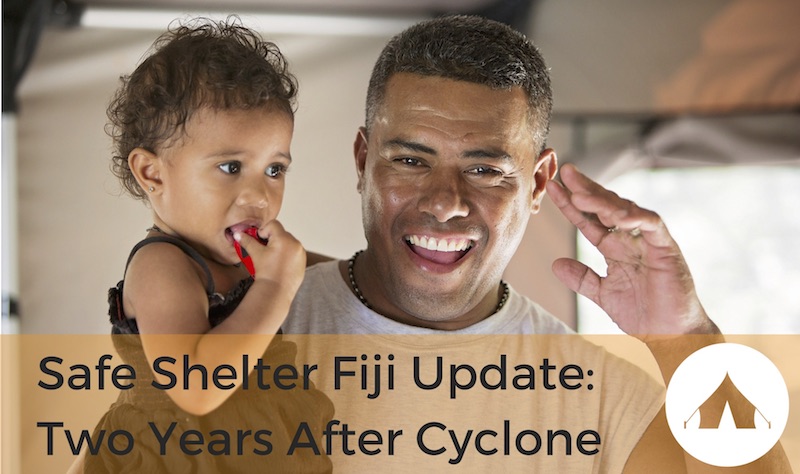Last November, we returned to Fiji where 60 Barebones shelters were sent in partnership with Direct Relief. Erik Workman was part of the first group of Barebones to begin set up in 2016. Tifie’s mission is to empower people to lift themselves up. We try to avoid the “love ’em and leave ’em” mentality that often occurs in humanitarian work, so it’s important to us to stay connected to our partners and projects long after the initial disaster relief.
Cyclone Winston leaves thousands homeless
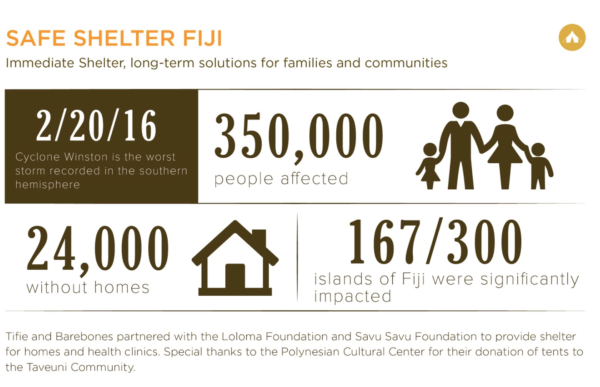
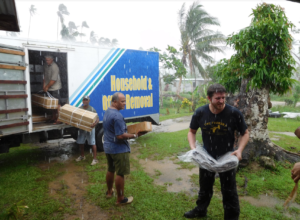
This relief mission was the first time for Erik Workman to be on the ground assessing needs and training people in the shelter set up. Upon his arrival, he saw the devastation with his own eyes and got a glimpse of what people were going through. He said another storm was approaching and could happen at any minute, giving him a sense of panic on the island.
It was obvious to Erik that the devastation of the secondary storms would be emotionally and physically devastating since most families were already homeless and forced to rebuild their lives.
Some of the people Erik talked to recounted their stories— how they were fleeing their homes and turned around to see their home following them!
“You just don’t even know or realize how destructive a storm like this is until you see the aftermath and realize the complete loss of everything just in that quick instance.”
In disaster situations where so many families are in need, we asked Erk how they decided and chose families to assist.
He said that the Savu Savu Foundation, our project partners, worked with each village’s chief to determine who needed to help the most. They found families who would not be able to rebuild a home themselves— top priorities being single mothers, elderly individuals and families with a lot of children, people who were physically unable to rebuild their homes.
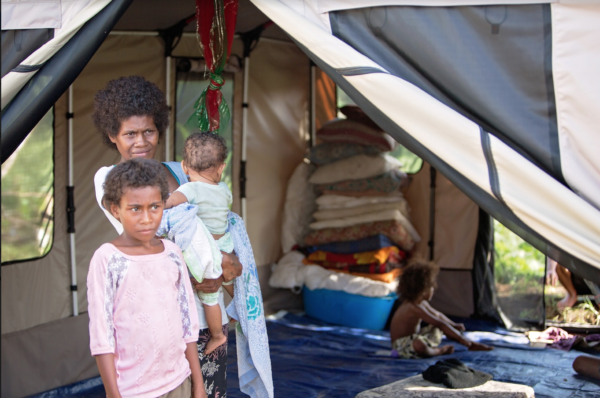
In Fiji, “life grows back quickly.” Even in the month between when the Cyclone hit and when Erik arrived with the shelters a month later, the island was already teeming with new life and new growth. The spirit of the land is full of life and resiliency, and that clearly is the spirit of the Fijian people. They immediately got to work, rebuilding homes, lives, normalcy as best they could. Visiting a year and a half later, it was obvious that even in the midst of rebuilding, life is abundantly growing back.
Returning to Fiji 18 months later
“We’ve fallen in love with this community. They were so grateful and willing to help.”
Robert and Ange Workman and Erik and Missy Workman returned to Fiji in November, 2017 to follow up with our project partners and enjoy the rebuilding of the tourist industry since the Cyclone.
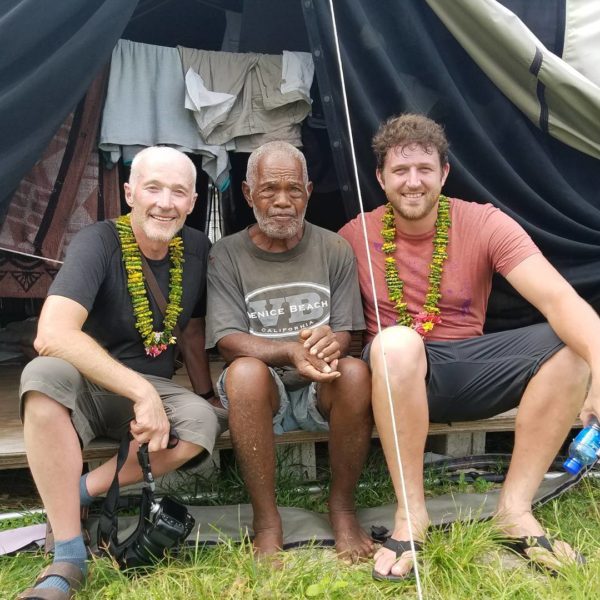
It was obvious to all of the Workmans that the people of Fiji are very special. They have a self-sustaining spirit and were filled with so much gratitude. Robert and Erik both echoed that, “we’ve fallen in love with this community. They were so grateful and willing to help.” Upon returning to Fiji, Erik was reminded of the self-sacrifice of so many of the people that he met in the first few hours of his trip. People who weren’t receiving shelters themselves, but showed up in the humid rainy weather to help people in their community.
The Workmans were so grateful for the hospitality of Helen, Linda, Bart, and the team at Jean Cueasteu Resort for their hospitality. It was truly this resort, who sponsor the SavuSavu Foundation , who coordinated the disaster response. The resort employs so many people on the island that they take disaster response seriously because it is their families. Erik said that Helen was the mother of the island.
We asked Robert what this project meant to him after going to Fiji.
“This was a true Tifie partnership. We were just one part of a great group of people. Shelters from Tifie, training and support from Barebones, medical supplies and logistics from Direct Relief, and local leadership from SavuSavu Foundation, and the people themselves. It was truly the people themselves who were lifting themselves back up.”
While there, they discovered that Direct Relief still supplies 80% of the islands medical supply needs. This was very moving to Robert, because it showed the long-term support that Direct Relief has with its partners. So often in emergency relief, aid organizations provide supplies and donation in the immediate aftermath, but disappear in the long years of rebuilding communities.
“We are so proud to be associated with Direct Relief and to be part of their projects around the world.” – Robert Workman
In Fiji, Tifie focused on the “shelter” development pillar. In our long-term projects, we look to immediate needs like emergency shelter or reliable power, and then focus on what additional needs the community has asked for, like education or job development. We talked with Erik about Tifie’s pillars (shelter, power, food, water, education and jobs) and how he saw that play out in emergency relief.
“Tifie’s mission works so well in any situation. In order for you to survive or thrive you need to have a safe shelter, you need to have reliable power sources, you need to have clean food and water, and you need to have a community to gather around. — Erik Workman
Leaving Fiji, we felt the grounding effects of a strong community. Hearing stories from one person after another of what the Cyclone had done to their family, how they had helped, rescued fed, served, and rebuilt one another’s homes, it was obvious how much they cared about each other.
We’re thankful that we were able to help and see Fiji in its beauty as it is rising strong from its adversity.

